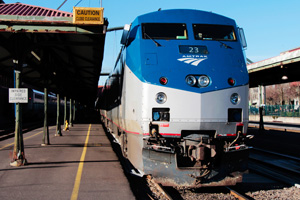
Passenger Train Safety System Goes Live
According to a recent article from NJ.com, Amtrak officials have unveiled a new safety system on trains running between Philadelphia and New York. What can this safety system do that previous train accident prevention efforts could not? The system is known as Positive Train Control, or PTC for short. It works by automatically slowing or stopping a train in the event that a train operator does not obey certain train signals or set speed limits. In other words, regardless of why a train operator is not running a train properly, PTC may be able to prevent a deadly transportation accident from taking place.
One Amtrak spokesperson indicated that the company recently activated the safety system on the route between Philadelphia and New York City, and it previously implemented PTC on the route between Philadelphia and Washington, D.C. For residents of the Northeast Corridor, the fatal crash that occurred on May 13, 2015 remains in recent memory. Investigators with the National Transportation Safety Board (NTSB) have determined that, “if Amtrak train 188 [the train involved in the derailment] had been equipped with PTC to control its speed, the deadly accident that occurred on May 13 could have been avoided.” Railroad officials initially told Congress that they were “years away from” installing PTC on trains throughout the country, but the new speed-control system is in fact already in use on many current train routes.
How does PTC work? It “uses radio transmitters to communicate with computers on board locomotives about signals and speed limits.” If a train operator does not abide by signals or speed limits, the system can control the train.
Train Accident Statistics
Many residents throughout the US rely on train transportation for everyday commuting. How often do passenger train accidents actually happen? According to data from the Federal Railroad Administration (FRA), the following numbers represent collisions, fatalities, and injuries in the last several years:
- 2010: 2,051 train collision, 260 fatalities, and 887 injuries;
- 2011: the total number of train collisions rose to 2,061, while injuries rose to 1,045;
- 2012: 1,985 accidents, 230 fatalities, and 975 injuries;
- 2013: the FRA reported 2,098 collisions, 232 deaths, and 972 injuries; and
- 2014: collisions rose to 2,287 (the highest number since 2008), 269 fatalities, and 849 injuries.
Hopefully, the new safety system will help prevent future train accidents. If you or someone you love suffered injuries in a train accident, contact an experienced personal injury attorney to learn more about filing a claim for financial compensation.



